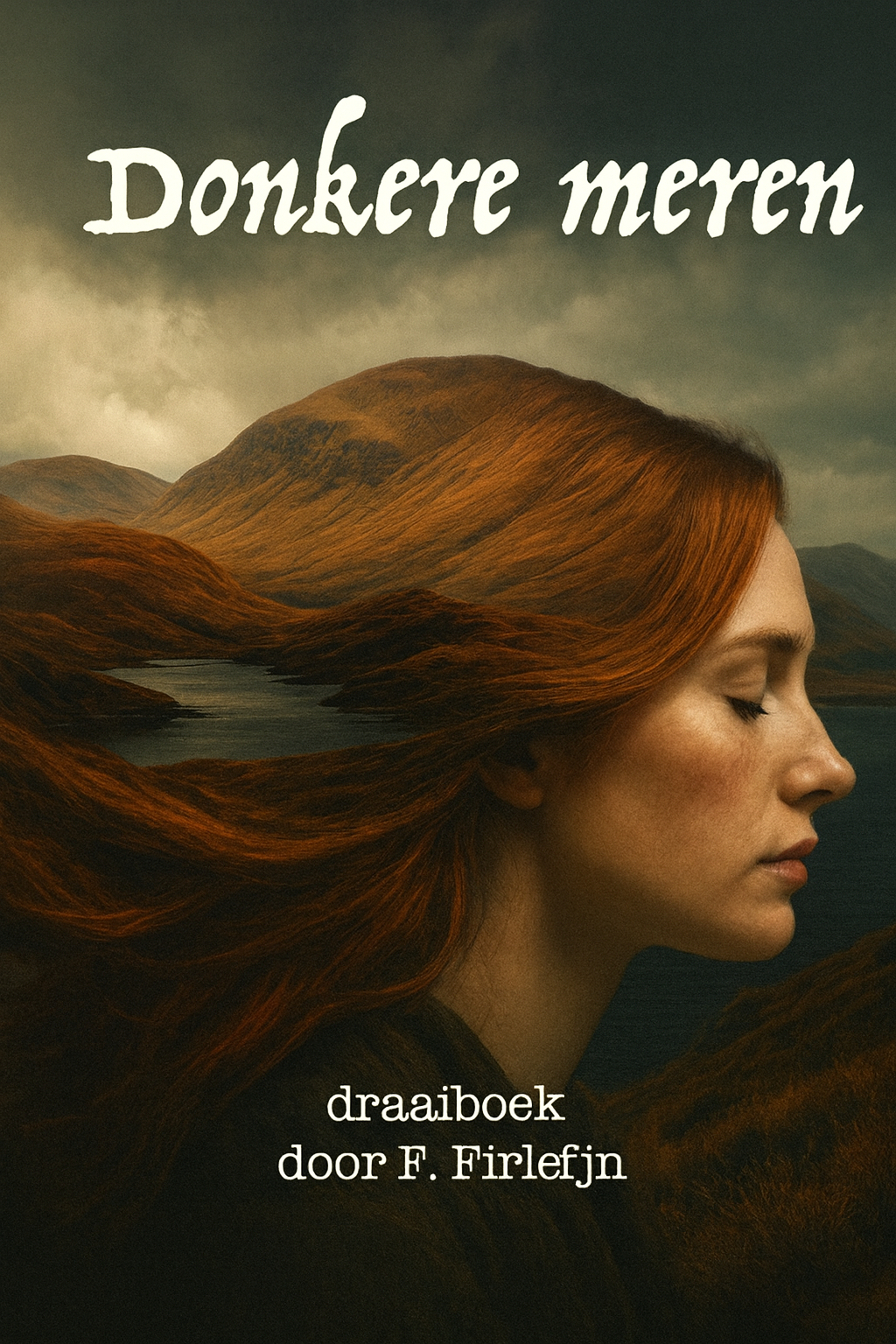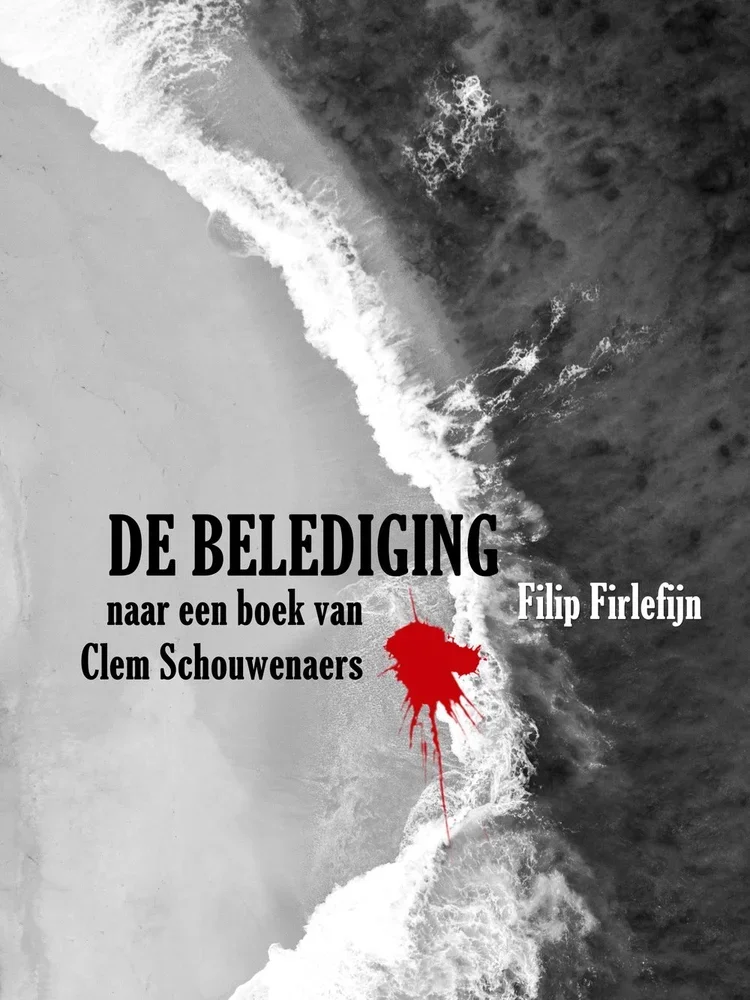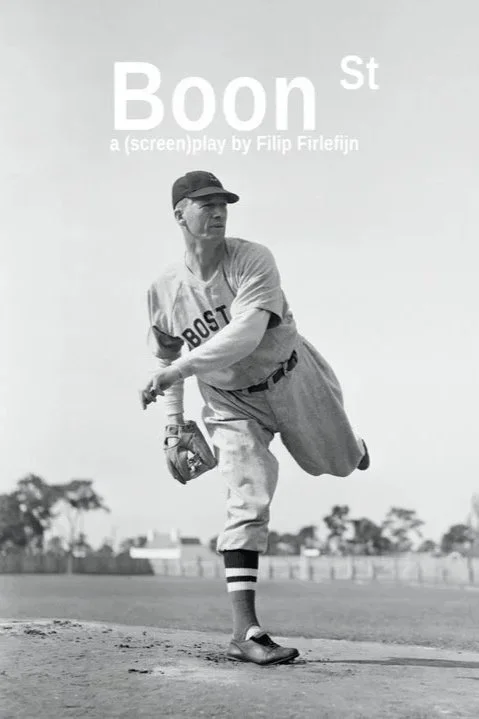SCREENPLAYS
Dark Lakes
(a screenplay in Dutch – creatively and freely developed with partial literal adaptation)
“Dark Lakes” is a character study of a tormented woman, written in the style of a David Lynch story.
Former detective Filip Feenstra is searching for relatives of the deceased Roland Fokker and encounters two women who both played a role in Fokker’s life. When it becomes clear that one of them suffers from psychosis, Feenstra and the other woman decide to steal Fokker’s inheritance together. But when the two meet in the harsh Scottish Highlands, the story takes a dramatic turn, revealing the profound psychological consequences of abuse and unwanted sexuality. The ending is as shocking as it is unpredictable.
Once again, in a screenplay by Filip Firlefijn, the narrative unfolds from different perspectives into a shocking apotheosis. Following in the tradition of Lynch and Tarantino, the storytelling rises to a masterpiece of psychological realism.
The Insult
(a screenplay in Dutch – creatively and freely developed with partial literal adaptation)
“The Insult” is a screenplay that gives the classic text Gras by Clem Schouwenaar a new and surprising twist. Jean-Luc Godard once remarked that a gun and a woman can instantly create tension in a story. The original tension of Schouwenaar’s tale, which carries a macabre undertone, is here further developed and intensified with creative input, heightening both the oppressive relationship dynamics and the underlying themes.
The framework of the story is relatively simple: the female protagonist finds herself in a difficult, searching phase of her life. When she begins working in a care home, she encounters a resident who claims to have made a famous actress successful. When he asks her to read aloud an old screenplay, the nature of their encounters gradually turns into distrust. As the tension in their relationship grows, and after an accident as well as an initially innocent “detective game” within the home, her fear steadily increases.
Here and Now
(a screenplay in Dutch – creative development of a very limited adaptation)
“Here and Now” is the title of Filip Firlefijn’s latest screenplay. Its opening is partially and freely, yet respectfully, adapted from De jihadkaravaan. Reis naar de wortels van de haat (The Jihad Caravan. Journey to the Roots of Hate) by Montasser Alde’Emeh and Pieter Stockmans. However, the first act is only the beginning of a crisis that finds its resolution in the second and third acts. The story weaves together history and reality to expose the complexity of the Syrian war. It is an attempt to use the war as a lens through which to portray the broader Middle Eastern conflict on screen — with multiple perspectives and contemporary sensitivities.
The protagonist, Akil, is loosely inspired by the biographical reality of “Monty” (from The Jihad Caravan), but reshaped to reflect the new conflict and to provide a comprehensive, emotionally charged, and tangible view of recent Middle Eastern history. In terms of plot, this means that alongside Akil’s early story — his Palestinian roots, his difficult upbringing in Belgium, and his attempt to leave for Iran to train with Hezbollah — a new direction emerges through the invention of a younger brother.
Akil’s younger brother Marid, born in Belgium and an outsider within his own family, actually travels abroad to fight — not for Hezbollah, but against Assad. To create a moving, relevant, and contemporary story, a journalist, Fayrouz, is introduced as an additional central character, complete with a romance between her and Akil. This figure was inspired by Janine di Giovanni’s The Morning They Came for Us: Dispatches from Syria, and in the final act she even becomes the new protagonist. Improbable yet modern elements are combined in a coherent way. Additional non-fiction sources were also consulted by Firlefijn to strengthen the realistic impression of the narrative — though it ultimately becomes more than just a documentary reflection of its time.
Back cover:
Here and Now is a screenplay by Flemish writer Filip Firlefijn. Following Boon St, which was conceived both as a stage play and a screenplay, this three-part tour de force is written consistently and deliberately for the screen. Akil, the son of Palestinian refugees, grows up in Antwerp and seeks to bring back his younger brother Marid, who has left for Syria. He receives help from journalist Fayrouz, with whom he quickly falls in love. Here too, structure and design are exceptional. Between enlightening realism, literary philosophy, and a touch of fairytale atmosphere, the reader/viewer is drawn into a profoundly dramatic storyline along a fragile thread of hope.
Boon St
(a screenplay in English – free and creative adaptation)
“Boon St” is Filip Firlefijn’s first official (screen)play, based on and inspired by the controversial and experimental novel Menuet (1955) by former Nobel Prize candidate Louis Paul Boon. The resulting story is, naturally, provocative, with an unconventional structure.
A young couple from Boston is going through a difficult period. While Aiden struggles with psychological trauma following the bombing of Dresden at the end of the Second World War, his wife May embarks on a small endeavor to save them from a “blue” downfall. When a young Jewish maid is sent to the couple to help them, the already fragile situation only worsens.
Each character in the main story has a narrative that recounts the events from their own perspective. Three parallel perspectives thus converge in a complete revelation of the dramatic finale, giving the story a raw and realistic feel. Not only his visual art but also Firlefijn’s screenplays are inspired by the era in which he grew up, influenced by experimental films such as Reservoir Dogs and Pulp Fiction.
To this complex structure, he even added a prologue featuring a fourth character, who seems almost to have written the entire story, even though he never fully knew it. This contradiction introduces an important paradox (less explicitly present in the original), which, through an authentic and credible confession, contributes to the tour de force of realism. The meta-realistic effort ultimately makes the realism deeper, truer, and stronger rather than weaker.
To fully understand the story and its adaptive method, a second edition includes an essay by the author.
POETRY
Fire Hazard
(a collection of Dutch poems with an English intermezzo)
“Fire Hazard” (“Brandgevaar”) is Filip’s poetic debut. It is a collection of around 200 poems in which love, with all its beautiful words, poetry itself, and even life appear transient — like the flammable paper on which we write about them. Poems such as Flemish and The Bottle explicitly sketch the background of a male figure who seems to have written this bundle in the 1970s.
Ironically, his background becomes more central towards the end, in the pessimistic second part. Yet this fully matches the concept of the collection, since it is ultimately about carefree, universally human feelings of love — emotions that, in a more personal context, are marked by complexities and eventually collapse. Grief and the sense of loss must be processed in a believable way.
However, it is not strictly necessary to understand all elements of this personal story in order to grasp the realistic depth of a relationship and the suffering of one of the partners. These elements do, however, offer additional space for interpretation to readers who enjoy digging deeper.
SHORT STORIES
My Crazy Friend
(a humorous sketch in German)
The Return of Things
(a short story in Dutch)
With “The Return of Things”, Filip won second place in 2002 in the short story competition (Literaire Prijs 2002) of his faculty at the University of Leuven, Belgium. The jury also nominated him in the category of Poetry for his poem Contract.
First success, 2002.






